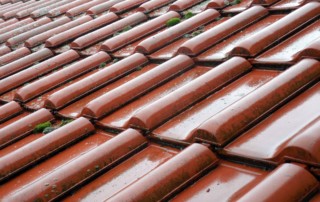As your local roofing experts, we have often recommended that you take advantage of the dry winter season to conduct roof inspections and take care of any necessary maintenance items. Once the rainy season arrives, it becomes more difficult to get on a roofing contractor’s schedule and work becomes more difficult to execute without delays for weather. However, time can get away from the best of us – so if you have not yet had your annual roof inspection, here are some spring roofing concerns you need to be aware of.
If you suspect you may need some roof work done, call today. There is still time before the daily afternoon thunderstorm arrives!
Spring roofing concerns typically include those issues which are likely to cause big problems if not fixed before storms and rain exploit any vulnerabilities. Some of the items you will want to address in the spring include:
- Eroded or Deteriorated Roofing Materials: If your roofing materials have suffered over time, whether because of weather, age, or critters, they can pose a significant problem sooner rather than later. The roofing materials – such as asphalt shingle or tile – are the outermost layer of protection between your home’s interior and the outside elements. Even the slightest crack, break or tear can allow water to seep through. And although there is an underlayment between these materials and your roof deck, each layer is meant to function in conjunction with the others. Water can make its way into the smallest spaces, and can wreak havoc. In addition to checking to make sure that your materials are intact, you will also want to inspect the flashings around any roof openings such as chimneys or vents. These metal pieces are meant to seal off and direct water away from these openings, but if they have become dislodged or rusted, may need to be replaced.
- Gutter System Wear & Tear: Our gutter system is expected to carry a lot of weight during the summer months – no pun intended. The amount of water which flows through the gutters is significant, and their job of whisking water away from the home is an important one. Therefore checking your gutters to make sure that they are still properly attached to the home, have no breaks or sagging portions, and are not cluttered with debris is essential. While at other times of the year the gutters are often flushed out by rainfall, your winter gutters may have accumulated a lot of leaves, twigs, or even nests.
- The Critters are Back: Once spring has sprung, the critters return in force, looking for the perfect new home for their family. Eaves and attics provide a safe and dry haven for everything from squirrels and birds to rats and raccoons. Checking to make sure that all vents are properly protected with chicken wire or mesh is key; as is making sure that there are no holes on any part of the roof structure which could provide an entry point. Don’t scoff at tiny holes or even cracks – tiny beaks and claws will take any opportunity to work at a small opening until it is large enough for them to get through. Protecting your home from becoming a critter colony is necessary to maintain the structure of the home, and keep disease or contamination from droppings to a minimum.
The good news is, the team at [company_name] can assess your vulnerability to all of these spring roofing concerns with just one visit and inspection. Remember, once the rainy – and hurricane – season starts, leaks begin – and by then you may have to wait for assistance. Call [company_name] today, and have peace of mind for the rest of the year.




